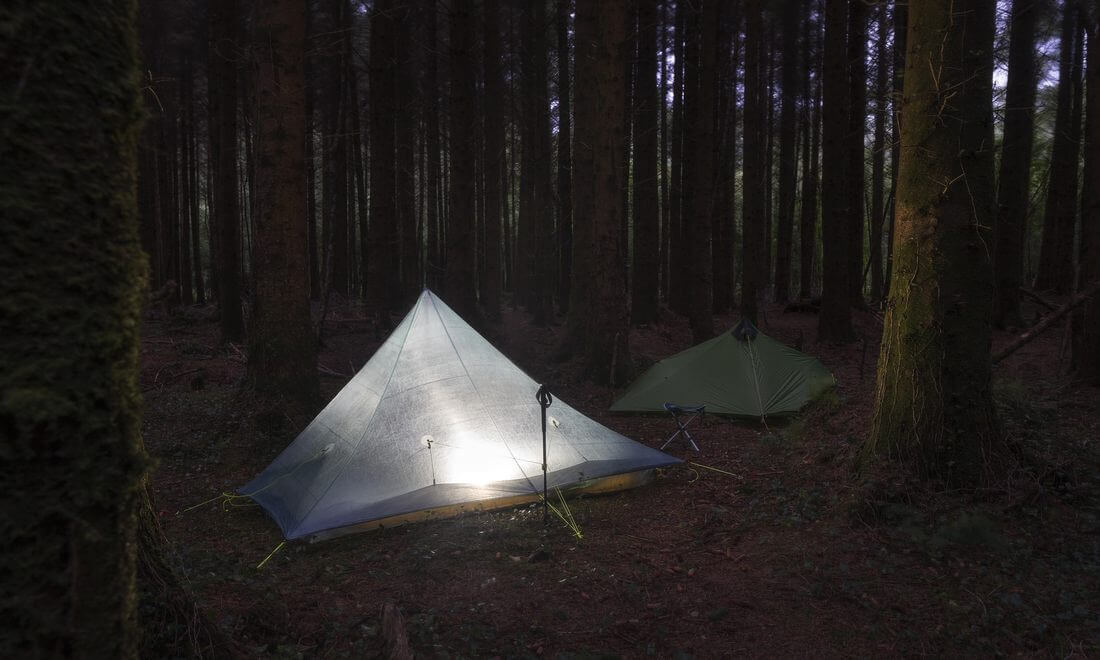
Emergency Power Planning for Different Outdoor Scenarios
Share
Whether you are preparing for a peaceful hike in the hills or a rugged multi-day camping expedition, power failure is one risk you cannot afford to ignore. Outdoor environments are unpredictable, and relying on electronic equipment without a proper backup plan is one of the most common and dangerous mistakes adventurers make.
This guide offers a clear, trusted checklist for emergency power planning across a variety of outdoor scenarios, from short local walks to remote off-grid expeditions. You will learn how to assess your needs, how to pack accordingly, and why combining lighting with power is the most effective way to prepare for unexpected challenges in the wild.
Why Emergency Power Matters for Every Trip
Even a short afternoon hike can go wrong with a twisted ankle, sudden fog, or failing torch battery. The ability to charge a phone, power a torch, or signal for help is more than a convenience; it is a lifeline.
Battery-powered devices are at the heart of modern safety kits:
- Torches and headlamps
- Smartphones with GPS and offline maps
- Emergency radios or satellite messengers
- Rechargeable first aid tools or heated layers
Without adequate power, none of these can function when needed most. That is why carrying backup power for camping emergencies should be standard practice, no matter the length or difficulty of your trip.
Scenario-Based Power Planning
Planning for emergency power begins by understanding the demands of your chosen activity. Here is how to prepare for different outdoor scenarios.
Short Local Walks (1 to 3 Hours)
Even a short hike can extend unexpectedly if the weather shifts or you take a wrong turn. For daytime activities close to home:
Recommended power kit:
- Fully charged smartphone
- Small torch or headlamp (200 to 300 lumens)
- Compact portable charger with flashlight, 5,000 mAh
- Durable charging cable such as the Rhino Power 60W USB-C to USB-C Charging Cable
Why this setup works: It provides basic light if you are caught out after sunset, and just enough energy to top up your phone. Choose a compact charger with emergency lighting built in so you are never without visibility.
Evening or Night Hikes (Up to 6 Hours)
As light fades, the risk of injury or misdirection increases. Whether on a mountain trail or forest path, hiking in darkness requires greater preparedness.
Recommended power kit:
- Headlamp (300 to 500 lumens)
- Backup power bank with LED light, 10,000 mAh
- Device charging cables
- Torch with strobe or SOS function
Include:
- Rhino Power Lightning to USB-C Charging Cable for Apple users
Key considerations:
- Ensure your headlamp is rechargeable, and bring a cable for topping it up from your power bank
- Look for devices with weather protection, especially if rain is forecast
- Choose a torch with a wide beam and high lumen output for improved spatial awareness on uneven terrain
Overnight Camping (1 to 2 Nights)
Spending a night in a tent introduces more complexity. You will need lighting not only for navigation but also for cooking, tent setup, and night-time safety.
Essential gear:
- Power bank with integrated LED night light for camping, minimum 10,000 mAh
- Headlamp or lantern
- Device chargers for phone, GPS, and camera
- Optional solar panel for top-ups during the day
Recommended features:
- LED output of 500 to 1300 lumens
- Multiple output ports (USB-C PD, USB-A)
- IP67 waterproof and dustproof rating
- Emergency light mode or SOS signal
RUGD. Recommends: The RUGD. Power Brick I delivers 10,050 mAh of charging power and a powerful 1,300 lumen LED emergency light. With an SOS mode and rugged IP67 rating, it is built for tough terrain and British weather alike. It also supports fast USB-C PD and USB-A quick charge output, providing reliable backup in any emergency. Whether you are powering a headlamp, recharging your phone, or lighting up your entire campsite, the Power Brick I does it all with dependable durability and ease.

Remote Multi-Day Treks and Expeditions
When travelling deep into remote areas, self-sufficiency is key. There may be no mobile signal, no trail markers, and no help for days. Power becomes a survival asset.
What you need:
- Two power banks, each 10,000 to 20,000 mAh
- One portable charger with 1300 lumen emergency light
- Lightweight foldable solar panel (20 to 30 watts)
- Rechargeable GPS, beacon, and satellite phone
- Waterproof charging pouch
Power tips:
- Use one bank during the day, charge the other via solar
- Prioritise USB-C PD for fast charging in limited daylight
- Keep emergency lights clipped to the exterior of your pack
- Use rugged charging cables like those from RUGD to avoid fraying or breakage
Pack Tip: Use an Army Apple AirTag Case to secure your tracker and protect it from the elements. This helps in retrieval scenarios or keeping tabs on gear.
Basecamp or Vehicle-Based Camping
When weight is less of a concern, comfort and longevity become the priority.
Recommended kit:
- Portable power station (500 to 1500 watt hours)
- USB-C and AC output compatibility
- Solar panel array for daytime recharging
- RUGD. Power Brick I for personal mobility
Basecamp power allows you to run more complex setups such as LED lighting strips, heated blankets, or cooking appliances. However, your personal emergency backup should still be compact and mobile.
How to Choose the Right Emergency Power Gear
Battery capacity
- For overnight use: 10,000 to 15,000 mAh
- For extended trips: 20,000 mAh or more, with solar support
Light output
- Minimum of 500 lumens for general visibility
- 1,300 lumens or higher for trail finding or campsite use
Durability
- IP67 rating for waterproof and dustproof protection
- Shock-resistant casing
Output compatibility
- USB-C PD and USB-A
- SOS or strobe mode
Final Preparation Tips
- Fully charge all devices 24 hours before departure
- Test torches and emergency lights
- Keep cables in waterproof containers
- Clip light-source tools externally for easy access
- Carry a checklist to avoid missed essentials
Frequently Asked Questions
What is the ideal power bank capacity for a one-night camping trip?
A 10,000 to 15,000 mAh power bank is sufficient for a one-night trip, allowing you to charge a phone once or twice and power basic lighting.
Do I need both a torch and a headlamp?
Yes. Headlamps keep your hands free for tasks, while torches with wider beams or SOS modes can be more effective for navigation and emergency signalling.
How many lumens are enough for outdoor emergency lighting?
For general campsite use, 300 to 500 lumens is sufficient. For trail navigation or emergencies, aim for 1,000 lumens or more.
Can I recharge a power bank with solar panels while hiking?
Yes, with a lightweight foldable solar panel of 20 to 30 watts, you can top up power banks during daylight hours, though efficiency depends on sunlight availability.
What makes the RUGD. Power Brick I different from other power banks?
It combines 10,050 mAh of charging power with a 1,300 lumen integrated emergency light, rugged waterproof construction, fast-charging ports, and SOS functionality – all tailored for serious outdoor use.
Why carry an Apple AirTag case on hiking trips?
To keep track of your gear or location in emergencies. The Army Apple AirTag Case by RUGD adds extra protection and attachment options for challenging terrain.
Final Thoughts
Power planning is more than convenience. It is your assurance that you will be seen, stay connected, and make it back safely.
Tools like the RUGD. Power Brick I, supported by durable charging cables and protective accessories such as the Army Apple AirTag Case, form the backbone of smart outdoor preparedness.
Explore confidently. Power smart. Choose RUGD.


